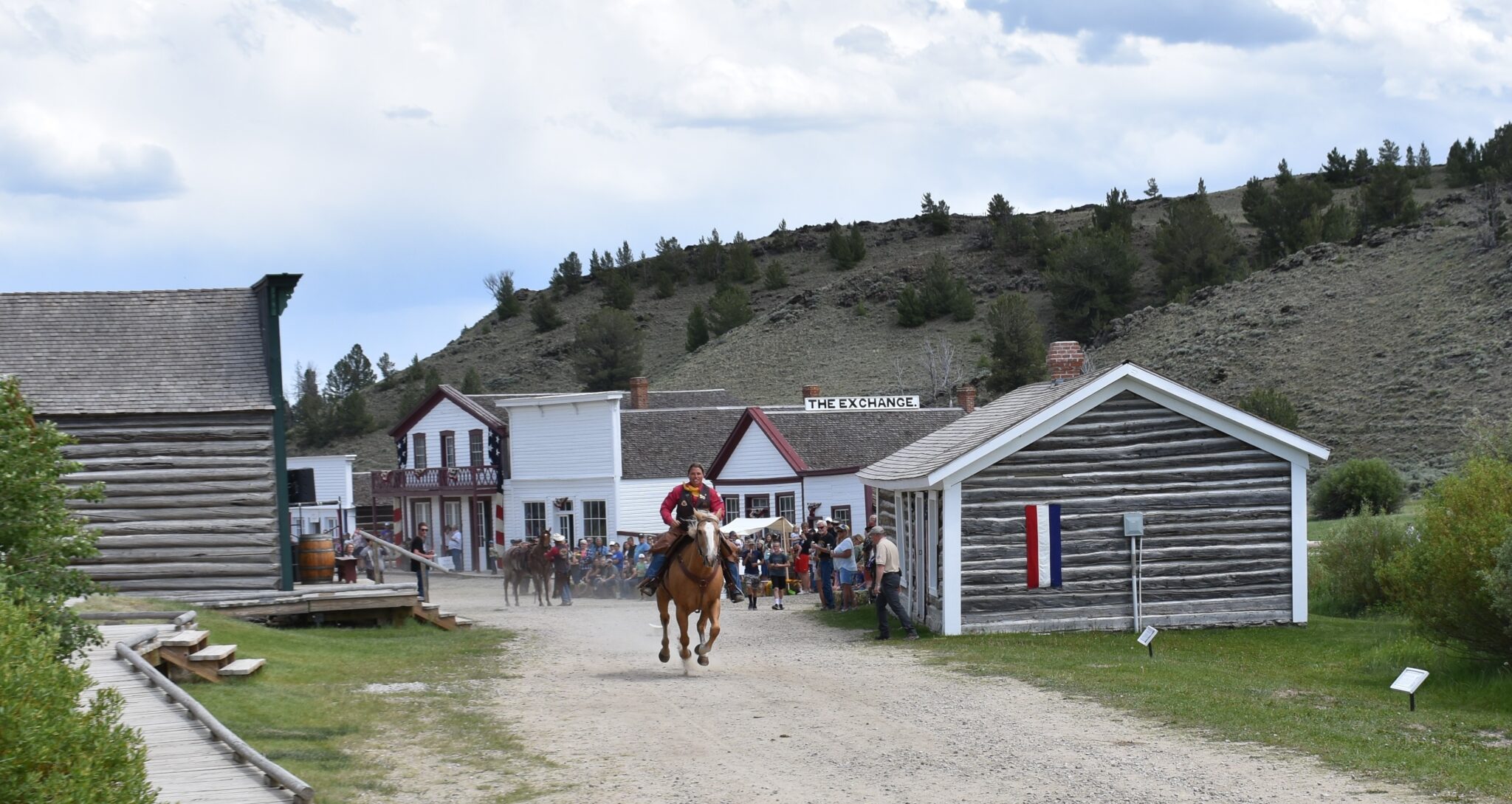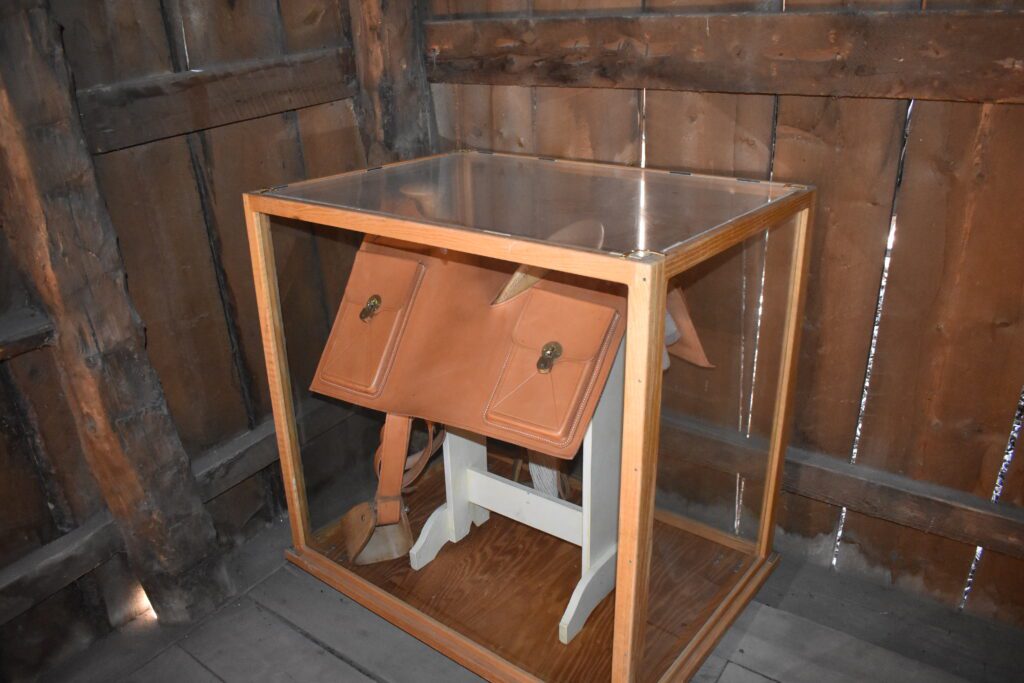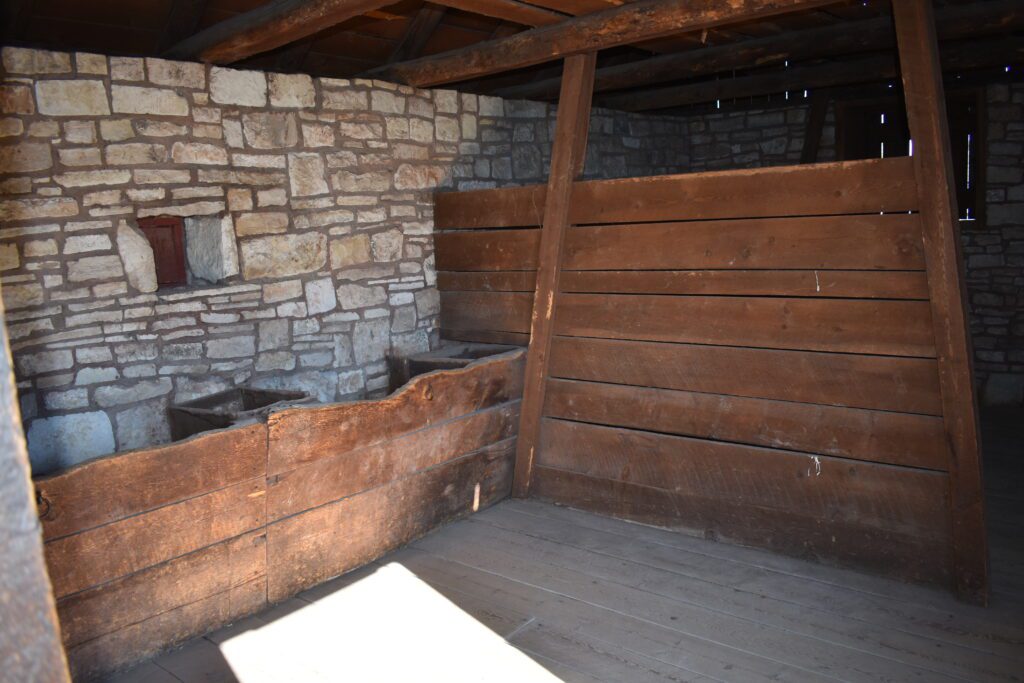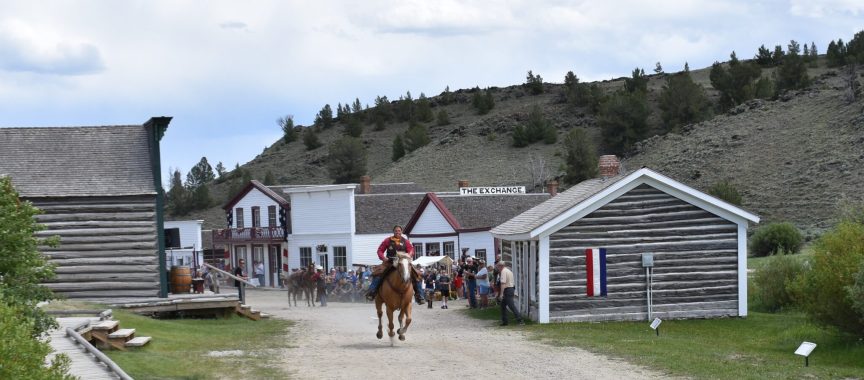News – Sheridan Media
[[{“value”:”
In the winter of 1859, several enterprising men decided to create a new mail service that could deliver the mail from St. Louis, Missouri to San Francisco, California, in ten days. The Pony Express was born, 128 years ago this month.
This fromThe Laramie Republican – Laramie, Wyoming, April 1897 – Residents of Colorado and the great plains region of today, even the oldest of them, have almost forgotten the story of the pony express, although a few of the original riders are still among us. In the winter in the winter of 1859-60, Senator William M. Gwln of California, Alexander Majors of this city and Daniel E. Phelps, who had been managing one of the stage coach lines across the country for several years with a good profit, met at Washington, and receiving assurance from the business men of New York and Boston and the United States government officials that a fast express line from the Missouri river to California would be patronized by them they decided upon a pony express. A company was immediately incorporated, in spite of the ridicule that many plainsmen cast upon the enterprise for its lack of practical sense.
In May, however, Senator Gwln and Alexander Majors furnished the capital and issued orders to start the enterprise at once. Agents were sent out to buy along the frontier and in Texas 600 broncos, combining fleetness, toughness and endurance, and the animals were bought and ready by September. Seventy-five men were engaged as riders. None of the riders weighed more than 110 pounds, and few more than 100 pounds. They were selected from among several hundred young men on the plains on account of their intrepid bravery, capacity to suffer long privations from food and drink, and ability to ride in the saddle for 150 or 200 miles at a stretch without rest when necessary.

(The advertisement in part asked for “Wiry Young Fellows, Willing to Risk Death Daily, Orphans Preferred.”)
They were chosen also for their shooting ability and their knowledge of the craft and mode of attack of Indians. The pay was fixed at $125 a month, but a few riders like Buffalo Bill and Dan Westcott, who were assigned to ride through regions infested by the Comanches, Arapahoes and Cheyennes, the most feared tribes of the plains of Colorado and Nebraska in those days, got $150 for their extra hard riding and for taking their lives in their hands almost daily.
Relay Stations – Relay stations were established along the 2,000 miles trail from the Missouri river, and broncos and several men, all equipped with rifles and pistols, were stationed at each. Between Salt Lake City and Sacramento, where the trails were even more lonely than on the great plains and where very hostile tribes were numerous in the mountain canons and the foothills of the Sierra Nevada range, relay stations were established every 40 miles.
Nearly a year was occupied and many thousands of dollars were spent in getting ready for the fast pony express line. The trial trip started from Sacramento on April 3rd, 1860, and St. Joe was reached in 11 ½ days.
When the first transcontinental telegraph went into operation in June 1862, the pony express came to an end, and seven years later the first transcontinental railroad system was finished connecting the oceans. The pony express was a financial success. Nothing showed congress and the capitalists more clearly the extraordinary demand there was for quick communication across the plains, and the profit there would be in transcontinental telegraphs and railroads to investors and projectors.
Buffalo Bill Cody once worked for Russell, Majors, and Waddell, who are credited with founding the Pony Express, and Cody, so it seems, embellished his life somewhat by saying was a Pony Express rider. But this is the story as he told it.

Pony Express Mochila, at Fort Bridger State Historic Site (Vannoy Photo)
The Sheridan Post, January 25, 1920 – Recalling the Days of Buffalo Bill, How the Pony Express Carried Letters Across the Continent. San Francisco, Jan. 24.—Just 6O years ago the Pony Express which carried letters from St. Louis to San Francisco in eight days was inaugurate.
Today plans are being made to establish a transcontinental airplane mail service, and trail-blazing flights have been made as far west as Omaha.
It was a great achievement when the pony express was started to carry the mail to the young but bustling state of California in 186O. Its inauguration was preceded by the publication in a St. Louis paper in March of that year, of the following advertisement. “To San Francisco in eight days. The first carrier of the Pony Express will leave the Missouri river on Tuesday, April 3 and will run regularly weekly thereafter, carrying letter mail only. Telegraph mail eights days, letters ten days to San Francisco.”
The population of San Francisco and other California towns eagerly welcomed this service, bringing them into touch as it did with the states; from which the gold hunter and other fortune seekers had migrated. Ten riders going each way, with changed horses every twenty-five miles; the pouches of mail across the thousand mile wilderness.
The pony express, with its fast riders, among them “Buffalo Bill”, (Colonel William Cody,) then a young man, was one of the most romance features of the great western country. Many were the adventures these daring riders had. They averaged seventy miles a day, but often covered double that distance.
“Buffalo Bill,” once made a ride of 384 miles when the messenger who was waiting was killed. Often chased by Indians or “sniped” by outlaws, the pony express riders were exposed to death at all times, and they braved rain and snowstorms term, as a part of an every-day duty.
One of the memorable achievements of the pony express was the delivery of Lincoln’s inaugural address in 1861, when all the western country was waiting for the momentous news from the capital. The address was hurried to St. Joseph, Mo., the “taking off place” of the pony express. Wrapped in oilskin and put in saddlebags the address was started on its way amid wild cheers. Fresh horses waited at every ten miles, and the final ten miles before reaching San Francisco was made in 31 minutes. The message was carried by the rides a total of 1,950 miles in 185 hours. The average of a little more than ten miles an hour. That was wonderful in those days.

Pony Express Stable, at Fort Bridger State Historic Site (Vannoy Photo)
The Pony Express went through eight states, beginning in Missouri, and running through Kansas, Nebraska, a corner of Colorado, Southern Wyoming, Utah, Nevada, and ending in California. Some of the old Pony Express relay stations still stand as a testament to the brave young men who braved death daily to deliver the U.S. Mail.
In part two we will look at some of the riders and the Pony Express relay stations.
“}]]
Last modified: April 6, 2025






